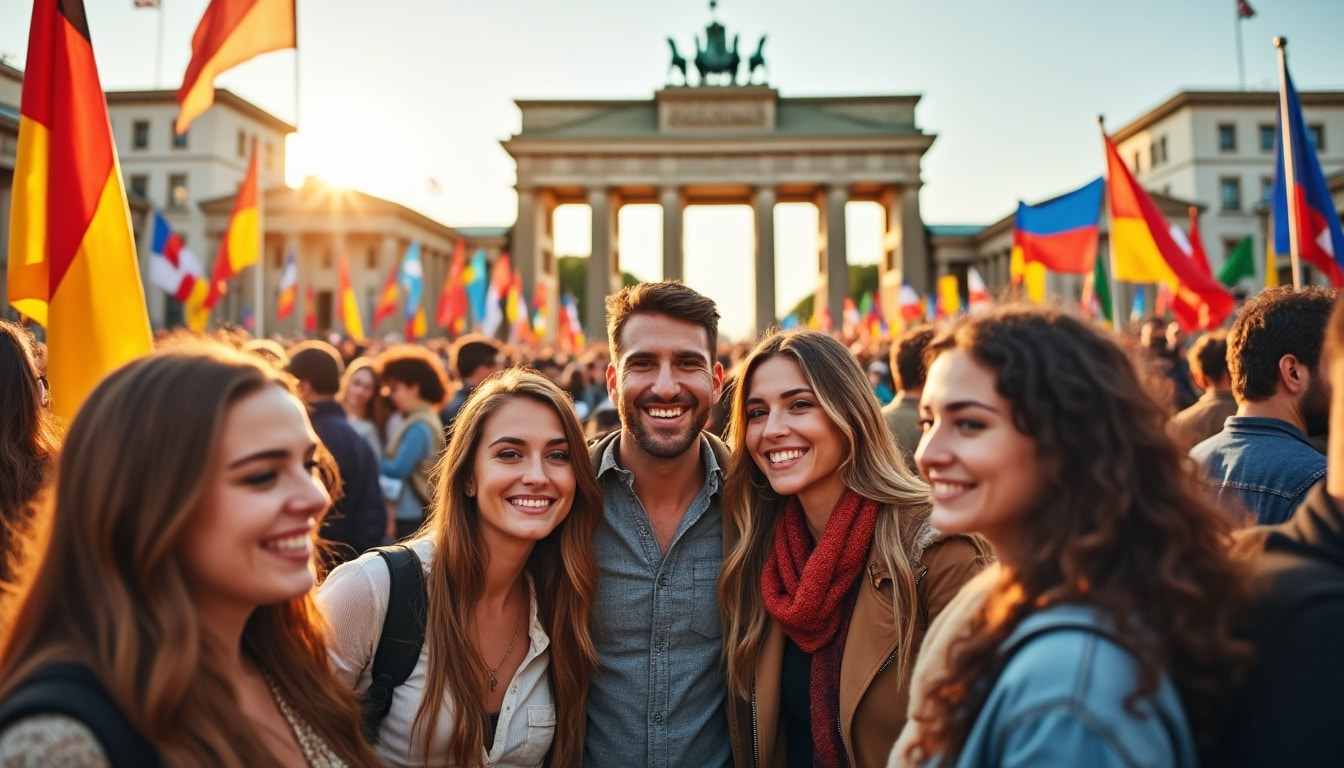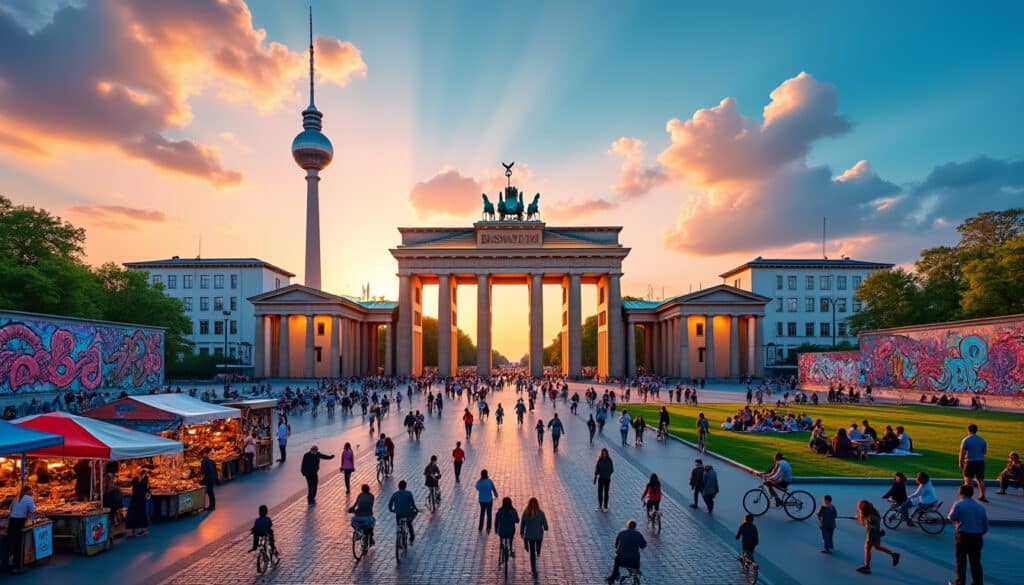The city of Berlin, known for its rich history and dynamic urban life, stands as a testament to resilience and cultural diversity. From its iconic bear-emblazoned flag to the various names it has been associated with over centuries, Berlin’s identity is as multifaceted as its storied past. The city is not only a hub for historical architecture and landmarks like the Berlin Wall Memorial and the Neues Museum but also for modern urban commodities such as Berliner Kindl and Fritz Cola. This article delves into the elements that shape Berlin’s identity, exploring the symbolism of its flag and the stories behind its many names.
The Symbolism Behind the Flag of Berlin
Berlin’s flag is a unique representation of the city’s identity, seamlessly blending historical significance with modern symbolism. The flag consists of three horizontal stripes of red-white-red, with the iconic Berlin Bear centrally positioned on the white stripe. The flag’s proportions are a 3:5 ratio, instilling a sense of harmony and balance. This design is not merely aesthetic but is imbued with deep historical connections.
The Berlin Bear, an emblematic figure, dates back to the 12th century. Although it was not used as a heraldic figure until 1709, the bear appeared on seals, coins, and signet rings, signifying a long-standing association with the city’s early identity. The bear symbolizes strength, endurance, and the vibrant spirit of Berliners. In fact, the bear’s presence on the flag further cements Berlin’s reputation as a city that stands strong in the face of adversity, mirroring its history of resilience and unity.
In 1954, after World War II, Berlin officially adopted its current flag, designed by vexillologist Ottfried Neubecker. The choice of adopting this flag was a significant move for West Berlin, especially during the sensitive Cold War era when Berlin symbolized the ideological division between East and West. As highlighted in the history of the flag, East Berlin had initially developed a slightly different version, which later served as a statement of solidarity as it was formally adopted across the united city post-1990 after the Berlin Wall fell.
The Berlin flag is a regular sight during official ceremonies and cultural festivities. Its presence during Berlin’s holidays and celebrations brings the community together, fostering a shared sense of pride among residents and visitors alike.
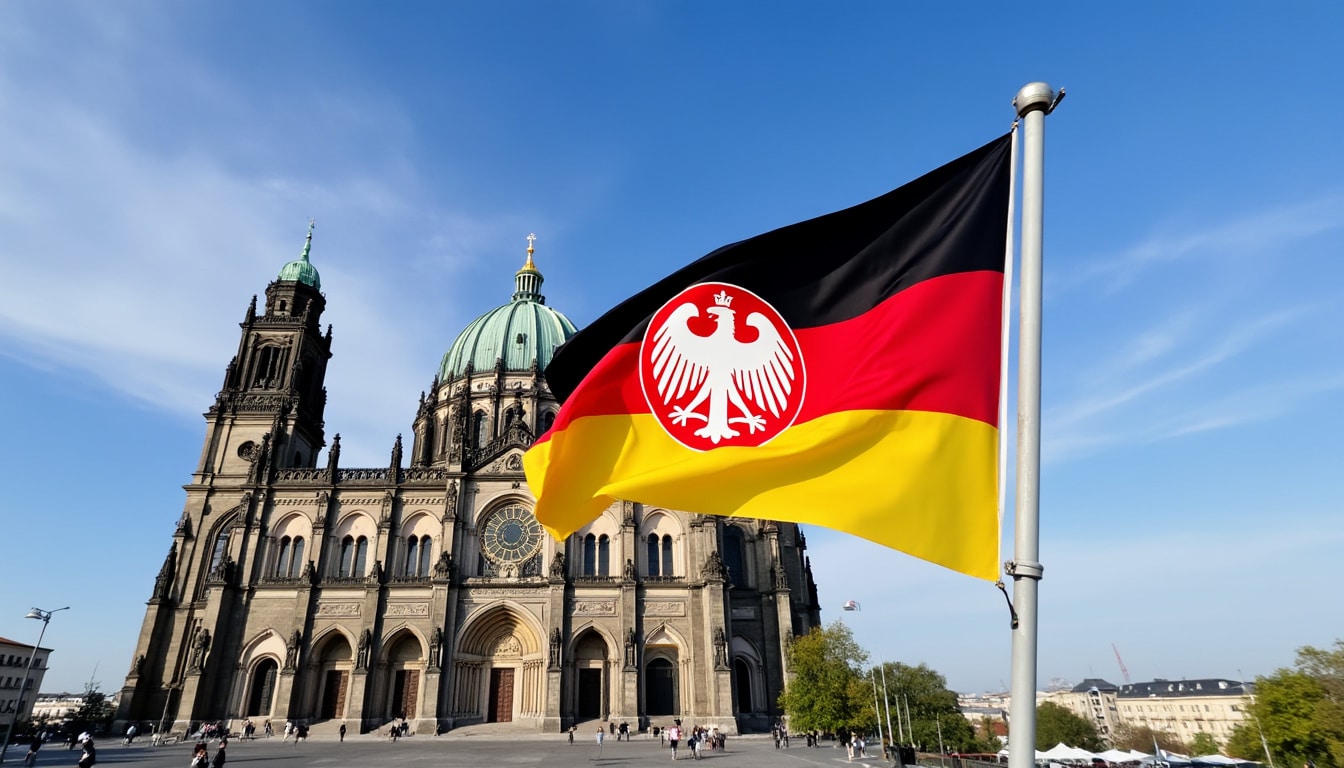
The Flag’s Role in Modern Events
The Berlin flag takes center stage in various modern events, symbolically reinforcing the city’s cultural and historical significance. During the Berlin Fashion Week, the flag often decorates venues, representing the city’s blend of tradition and contemporary style. It also flies proudly at the city’s annual Volksfest celebrations, marking a time of cultural reflection and unity.
With each public display, the flag not only represents Berlin’s historical trajectory but also its aspirations for the future, making it a constant reminder of the city’s unique blend of the past and present.
The Evolution of Berlin’s Names Through History
Understanding the names associated with Berlin is akin to taking a journey through time, revealing the city’s evolving identity and cultural transformations. These names encapsulate Berlin’s historical shifts, from a regional powerhouse to a present-day metropolis.
Historically, the name “Berlin” is believed to have Slavic origins, though the exact meaning remains a subject of scholarly debate. It signifies the area’s early settlements with Slavic-speaking communities before Germanic influences became predominant. This transition is reflected in Berlin’s later association with various Germanic tribes and its eventual position within Brandenburg and Prussia.
Notably, during the Brandenburg and Prussian periods, Berlin was occasionally referred to in alignment with the reigning monarchs or regional rulers, reflecting political control and influence. For instance, during the reign of Wilhelm I, Berlin was firmly established as a capital of power, prompting influences in its identity and urban development.
Moreover, Berlin’s association with its emblem, the Berlin Bear, strengthens its reputation as a bastion of strength and steadiness—an identity that remained constant even during foreign occupations and wartime adversities. It’s this constant evolution and adaptation that showcase the city’s dynamic nature, making it an enduring attraction for historians and tourists alike.
The Influence of Berlin’s Names on Local Culture
The various names attributed to Berlin over centuries have subtly influenced its local culture. They resonate through the city’s diverse neighborhoods, such as Kreuzberg, where a mix of historical and cultural elements create a vibrant community atmosphere. The names’ impact can also be witnessed in local commodities, like Berliner Kindl beer—a testament to the city’s rich brewing tradition—and cultural establishments such as Café Einstein.
Key Influences of Berlin’s Names on Culture and Identity:
- 🎨 Establishment of cultural institutions and artistic hubs.
- 🎧 Growth of the techno scene, epitomized by clubs like Berghain.
- 🍺 Development of unique local products like Berliner Kindl and Fritz Cola.
Intriguingly, the adoption and adaptation of these names continue to shape the ongoing narrative of Berlin’s rich history and diverse identity.
How Berlin’s Identity is Reflected in Symbols
Berlin’s identity is multifaceted, anchored in its rich history and the vibrant tapestry of symbols that permeate its urban fabric. The city, often seen as a living museum, showcases its identity through monuments, architecture, and architectural features that tell stories of resilience and cultural amalgamation.
Among these symbols, the Berlin Wall Memorial stands as a poignant reminder of the city’s divided past. This memorial, unlike any other, not only symbolizes a period of division but also the eventual triumph over separation and the reunification of a nation. Berlin’s history is inseparable from the experiences sown during the Cold War era, telling powerful narratives of endurance and transformation.
Additionally, structures like the Berliner Dom and the Neues Museum offer glimpses into the grandeur and elegance of Berlin’s past, reflecting the city’s status as an epicenter of art, history, and religion. These monuments, adorned with intricate designs and housed in historically significant sites, draw millions of tourists every year, all eager to experience Berlin’s storied past up close.
Urban Culture and Identity in Modern Berlin
In contemporary contexts, Berlin embraces its status as a city of contrasts, merging historical influences with avant-garde cultural expressions. The vibrant neighborhood of Kreuzberg, for instance, is known for its eclectic mix of cultures, cuisines, and artistic endeavors. Berlin’s flagship events like the Berlin Fashion Week showcase its avant-garde style and innovative spirit, attracting global attention and spotlighting the city as a fashion capital.
Symbolic Places Reflecting Berlin’s Identity:
- 🏛 Berliner Dom – A testament to religious and architectural heritage.
- 🕌 Neues Museum – A representation of Berlin’s archaeological treasures.
- 🎉 Festivals like the Berlin Fashion Week – Highlighting the city’s modern artistic flair.
Through these symbols and the culture they perpetuate, Berlin reinforces its identity as a city that cherishes its past while pushing boundaries in design and innovation.
The Role of Berlin’s Identity in Everyday Life
Berlin’s identity extends beyond its historical symbols, penetrating everyday life and shaping experiences for locals and visitors. Public spaces often bear witness to the daily convergence of Berliners from various backgrounds, creating an atmosphere that is both dynamic and inclusive.
With a population that embodies a rich tapestry of cultures and languages, Berlinites take immense pride in this diversity, which is reflected in the city’s culinary, artistic, and social landscapes. Cafés like Café Einstein are local favorites, serving as cultural hotspots where language, ideas, and flavors intersect.
These everyday interactions are further enriched by Berlin’s diverse shopping options, where souvenirs and local crafts offer glimpses into the city’s eclectic identity. Markets and boutiques not only cater to tourists but also showcase local talent, ensuring that Berlin’s rich narrative persists in practical, tangible formats.
Diversity and Economics in Berlin’s Daily Life
The economic landscape of Berlin is heavily influenced by its vibrant identity. From small businesses selling inventive products to global brands like Volkswagen establishing strong market presences, Berlin is a nexus of economic activity. This robust economic climate encourages innovation and growth, attracting both entrepreneurs and established companies seeking inspiration and opportunity in the capital.
Aspects of Berlin’s Everyday Identity:
- 🛍 Souvenir and shopping experiences reflect Berlin’s creative industry.
- 🏢 Diverse businesses, from local startups to multinational corporations like Volkswagen.
- 👥 Active community events promoting cultural exchange.
Berliners, with their rich cultural heritage and diverse backgrounds, contribute to a collective identity that is celebrated in everyday life and remains a beacon of creativity and resilience.
Historic Elements of Berlin’s Identity in Modern Times
The rich historical elements that define Berlin’s identity continue to be prevalent and admired in modern times. This historical tapestry, woven into the city’s present, is visible through traditions, language, and narratives passed down through generations.
Traditionally, Berlin’s history has shaped its language, with German being the dominant tongue while accommodating a myriad of other languages, reflecting the cosmopolitan nature of the city. The evolution of language in Berlin, influenced by a history of migration and settlement, is evidenced throughout the city’s schools, media, and public discourse, playing a significant role in maintaining the city’s diverse and inclusive character.
More than just language, the combination of old and new architectural styles within the city illustrates the dynamic juxtaposition between traditional elements and modern influences. This blend adds to the city’s vibrancy, maintaining its rich history while embracing contemporary trends.
The Language and Architecture of Berlin
Berlin’s linguistic landscape is as diverse as its architectural one. The city is a place where traditional German meets a kaleidoscope of languages from all corners of the world, creating a diverse linguistic environment. Further exploration of Berlin’s language and spelling nuances provides insights into this mosaic.
Architecture in Berlin presents a vivid chronicle of the city’s historical and modern epochs. From the majestic Brandenburg Gate, which stands as a symbol of victory and peace, to the contemporary designs in neighborhoods revitalized after reunification, Berlin’s structures are silent narrators of its journey through centuries.
Summary of Historical Elements in Modern Berlin:
| 🏛 Element | Significance 🌟 |
|---|---|
| Language Evolution | Diverse linguistic influences reflecting Berlin’s multicultural identity. |
| Architectural Heritage | Combines historical significance with modern architectural innovation. |
| Community Traditions | Preserved and celebrated in modern annual events and festivals. |
These elements of Berlin’s identity serve as enduring connections to the past, threading a narrative that is both storied and vibrant, shaping the city as we know it today.
FAQ
What does the bear on the Berlin flag symbolize? 🐻
The bear is a centuries-old symbol of Berlin, representing strength, endurance, and the city’s vibrant spirit. Its presence on the flag underscores Berlin’s identity as a city that stands resilient despite challenges.
How does Berlin’s architecture reflect its history?
Berlin’s architectural landscape showcases a blend of historical and modern designs. Iconic structures like the Brandenburg Gate and contemporary urban developments narrate the city’s journey through time.
In what ways does Berlin’s identity influence its economy? 💼
Berlin’s diverse identity supports a dynamic economic environment. Its vibrant culture, creative industries, and welcoming atmosphere have attracted numerous businesses, including startups and global firms like Volkswagen.
Why is Berlin’s flag significant during celebrations? 🎉
The Berlin flag is a symbol of unity and pride. During public events and holidays, its display enhances the sense of community and affirms the rich traditions and culture of Berlin.
What role does language play in shaping Berlin’s modern identity?
Language in Berlin reflects its multicultural roots, with German being the official language and several other languages coexisting, reflecting the city’s inclusive and diverse nature.
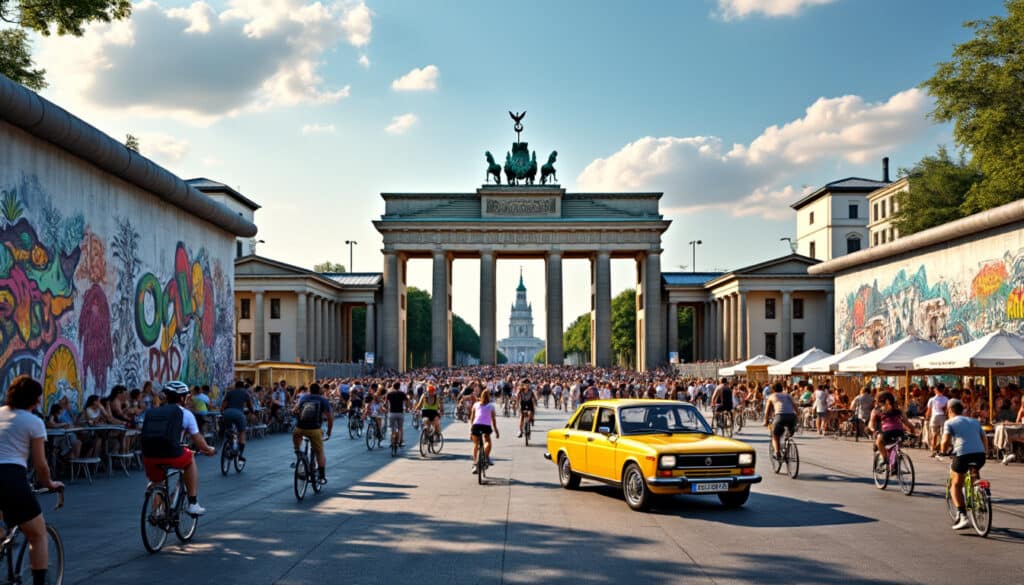
Fun Facts & Curiosities About Berlin
Berlin, a city of rich history and vibrant culture, never fails to captivate those who explore its streets. Renowned for its eclectic blend of old-world charm and contemporary vigor, Berlin is a treasure trove of fascinating facts and unexpected discoveries.…
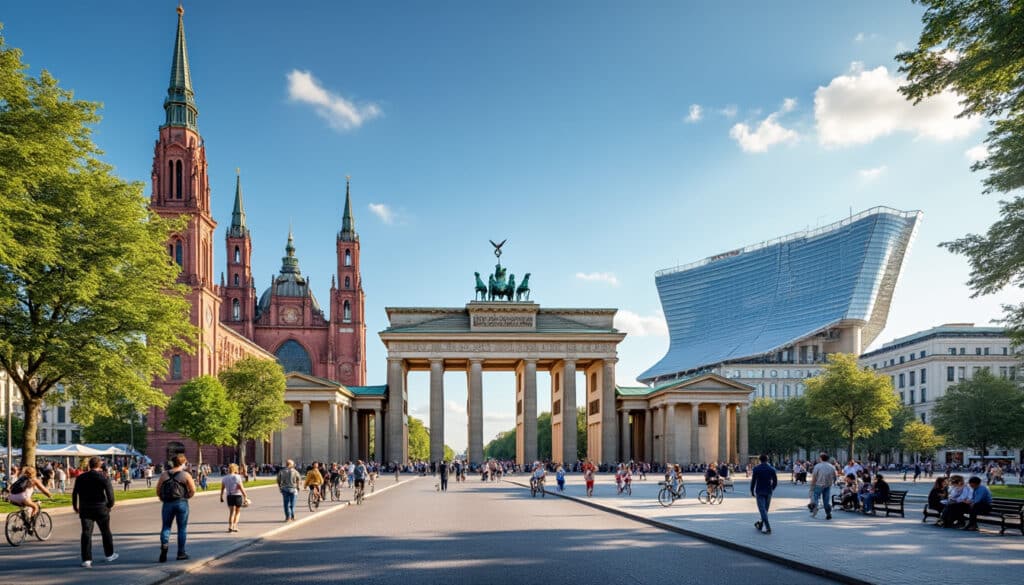
Architecture and urban features of Berlin
Berlin stands as a living testament to the intersection of architectural evolution and rich history. The city’s skyline is a mosaic of styles, reflecting its tumultuous and vibrant past. From the grandeur of the German Empire to the stark functionalism…

Berlin, a city that never stops moving, offers a multitude of experiences to its residents. From arts and technology to the vibrant nightlife, daily life in Berlin is both invigorating and diverse. For expats and locals alike, the city is…
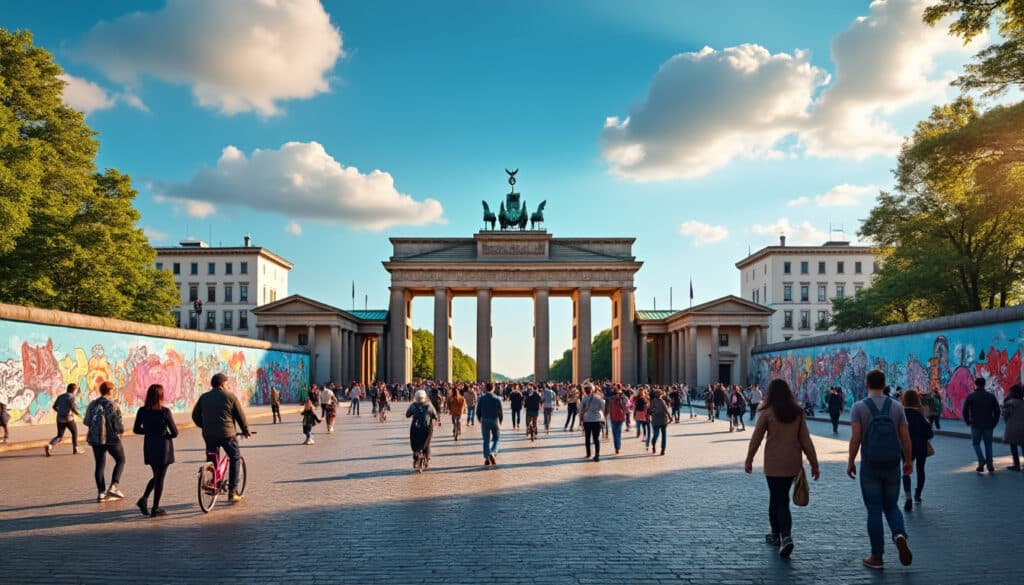
Demographics and geography of Berlin
Berlin, the vibrant capital of Germany, stands as one of Europe’s most intriguing cities, known for its rich history, diverse culture, and dynamic growth. As the largest city in Germany, it boasts a unique blend of historical significance and modern…
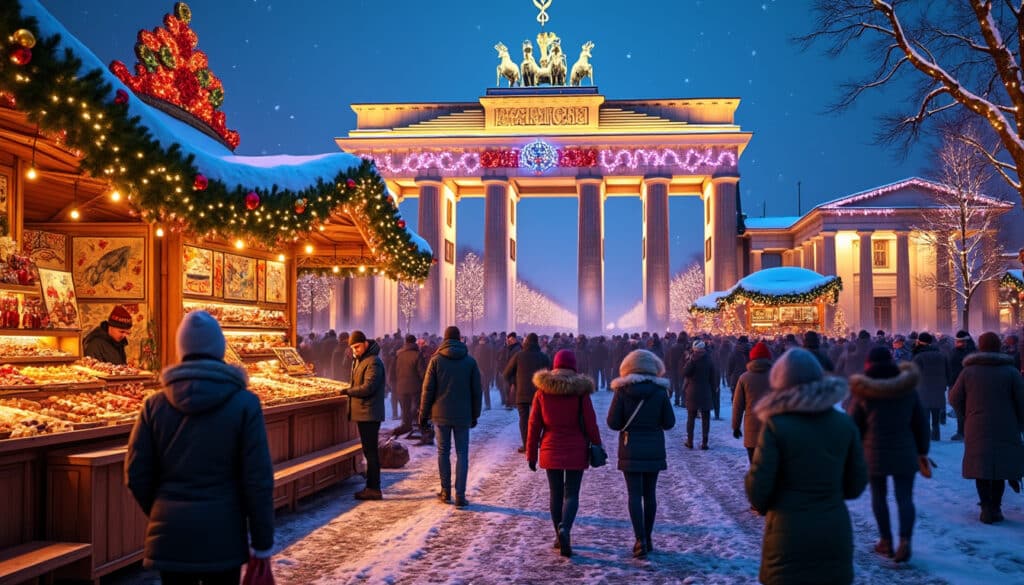
Holidays and celebrations in Berlin
Berlin, a city renowned for its vibrant cultural tapestry and energetic spirit, celebrates life through a diverse array of holidays and festivities. As one immerses in the lively pulse of this city, the celebrations not only reflect its deep-rooted history…

Language and spelling of Berlin
Berlin is not just Germany’s capital but also a hub of diverse cultures, traditions, and languages. With its blend of history and modernity, the city offers a unique linguistic experience. Travelers and residents alike are exposed to a rich tapestry…
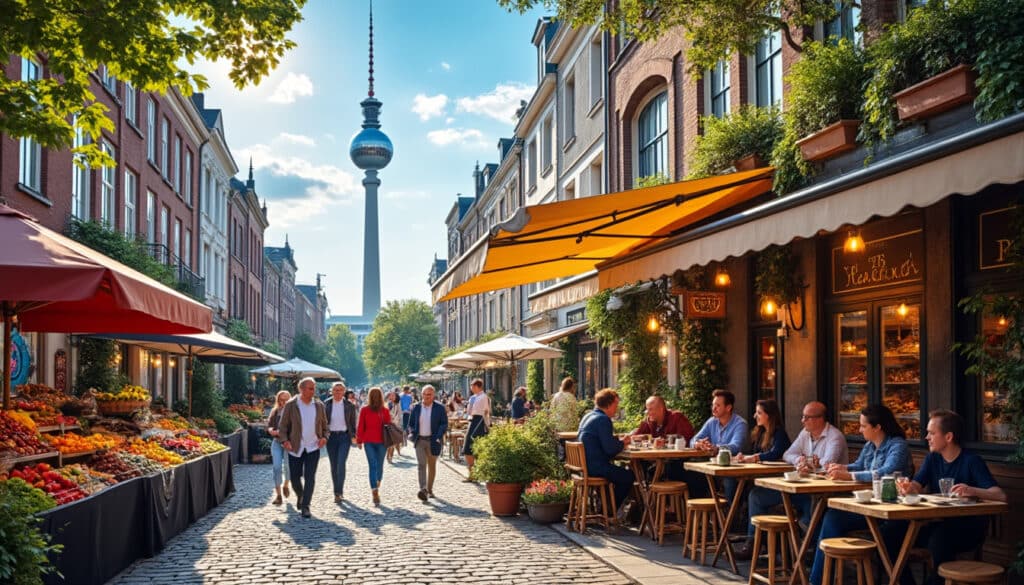
Local tips for tourists in Berlin
Berlin, the vibrant capital of Germany, is a city teeming with history, culture, and an unrivaled nightlife. While the must-see landmarks such as the Brandenburg Gate and the Berlin Wall are well-known, there’s a treasure trove of local secrets that…
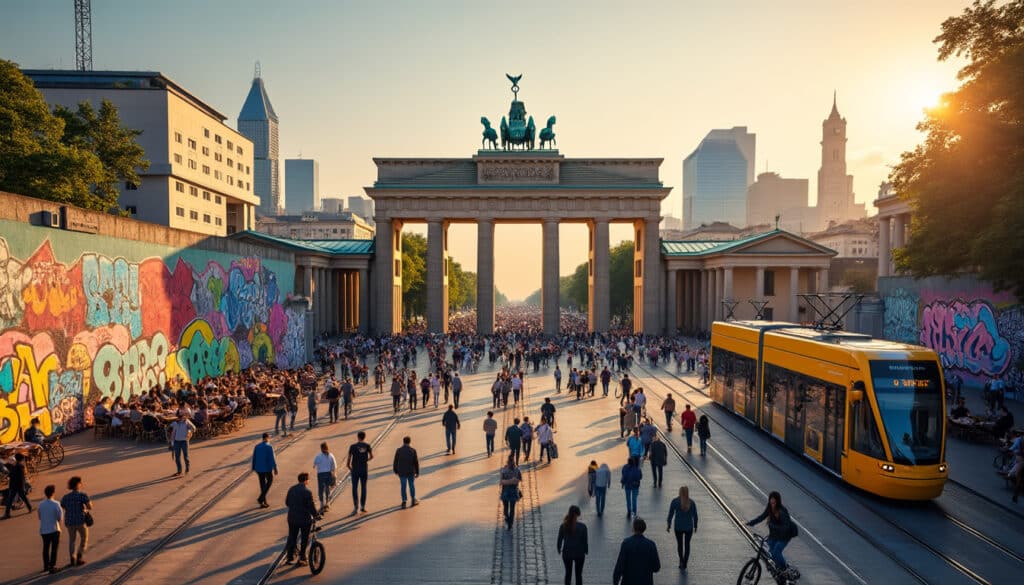
Reputation and identity of Berlin
Berlin, a city of transformation and dynamic culture, has sculpted a unique identity recognized worldwide. This vibrant metropolis offers a captivating blend of history, art, and contemporary life, shaping its reputation as a global cultural epicenter. From the iconic East…

Berlin, a dynamic city that never sleeps, is not only famous for its rich history, vibrant culture, and bustling nightlife, but also for its intricate relationship with time. As a city that exists at the crossroads of the past and…
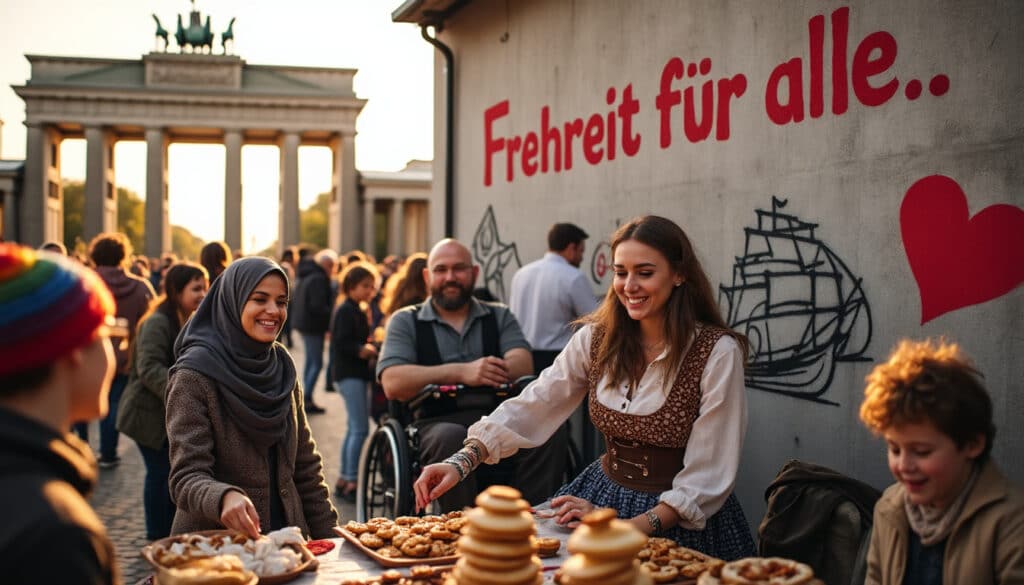
Unusual facts and social issues in Berlin
Berlin, the eclectic heart of Germany, pulsates with vibrant energy, drawing travelers and culture enthusiasts from around the globe. While its rich history and monumental landmarks often steal the spotlight, the city is peppered with quirky and intriguing facts that…

What does Berlin look, smell, feel like?
Berlin, the heart of Germany, is a city that tantalizes all senses. From its historic architecture to the dynamic street art, the pulse of Berlin is felt in every corner. Visitors are often captivated by the blend of vibrant city…

